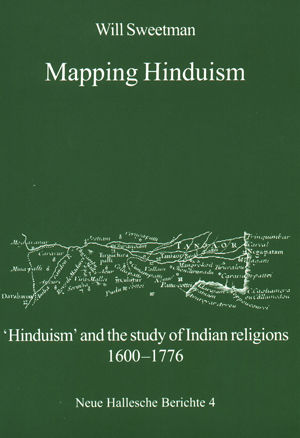Sweetman, Will
Mapping Hinduism: "Hinduism" and the study of Indian religions, 1600-1776
The process by which Hinduism came to be constituted as an object of European study is often taken to be the most egregious example of the invention of a religion through the reification of disparate traditions of belief and practice an the projection of theological preconceptions or imperial ambitions. In this work Will Sweetman offers both a theoretical reconsideration of the status of the term Hinduism and an alternative historical account of its emergence in the eighteenth century based on consideration of early Dutch, English, French and German sources, demonstrating that its scope owes more to Indian ideas of religious affiliation as the time of its emergence more to the evolving modern concept of India as a geographical entity than either does to theological preconceptions or imperial ambitions.
Viṣṇu's Children: Prenatal life-cycle rituals in South India
The Vaikhānasas, a group of Brahmanic priests in the Viṣṇu temples of south India, can look back on a long and turbulent history, that is characterized by the effort of claiming their status against rivalling priests. Central to this monograph is a controversy, ongoing for centuries, as to what makes a person eligible to perform the rituals in Viṣṇu temples: does birth or an initiation create the ideal intermediary between the god and humans? Since the 14th century CE the discussions in the relevant Sanskrit texs centre around the question of whether the Vaikhānasas priests must undergo an initiation including a branding on the upper arms, or whether their particular prenatal life-cycle ritual viṣṇubali makes them eligible to perform temple ritual. As hereditary temple priests the Vaikhānasas’ own stance is explicit: they are Viṣṇu’s own children, preordained for temple service already before birth. In addition to the textual perspective, three instances of local conflicts from the 19th/20th centuries about the question of whether the Vaikhānasas require an initiation are analysed in their contexts. Furthermore, three examples of present-day performances of the viṣṇubali ritual are presented and interpreted in the light of the relation between text and performance.
The films, which were originally published on a DVD accompanying the book, are archived in the heidICON multimedia database and can be viewed via the following links:
- Introduction (length 08:10 min)
- Full ritual (length 28:28 min)
- Prepatory rites - Formal declaration (03:51 min)
- Prepatory rites - Vitalisation of the sacrificial fire (06:45)
- Main offerings - Pūjā for Viṣṇu's twelve forms (11:09 min)
- Main offerings - Offering into the fire (09:01 min)
- Main offerings - Viṣṇu marks the unborn child (09:53 min)
- Atonement for ritual flaws (03:46 min)
- Concluding rites (04:43)
- Credits









